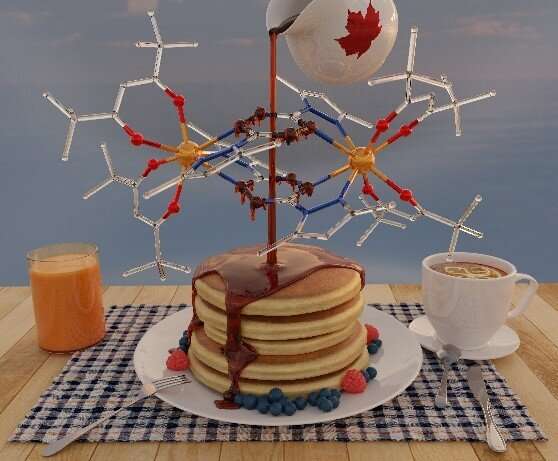
A Canadian-Finnish
collaboration has led to the discovery of a novel magnetic compound in which
two magnetic dysprosium metal ions are bridged by two aromatic organic radicals
forming a pancake bond. The results of this study can be utilized to improve the
magnetic properties of similar compounds. The theoretical investigation of the
study was carried out by the Academy Research Fellow Jani O. Moilanen at the
University of Jyväskylä, whereas the experimental work was performed at the
University of Ottawa in the groups of Profs. Muralee Murugesu and Jaclyn L.
Brusso. The research results were published in the well-recognized chemistry
journal—Inorganic Chemistry Frontiers in July 2020—with the cover art.
Magnets are used in many modern electronic devices ranging from mobile phones and computers to medical imaging devices. Besides the traditional metal-based magnets, one of the current research interests in the field of magnetism has been the study of single-molecule magnets consisting of metal ions and organic ligands. The magnetic properties of single-molecule magnets are purely molecular in origin, and it has been proposed that in the future, single-molecule magnets could be utilized in high-density information storage, spin-based electronics (spintronics), and quantum computers.
Unfortunately, most of the currently known single-molecule magnets only exhibit their magnetic properties at low temperatures near absolute zero (?273°c), which prevents their utilization in electronic devices. The first single-molecule magnet that retained its magnetization over the boiling point of liquid nitrogen (?196 °C) was reported in 2018. This study was a considerable breakthrough in the field of magnetic materials as it demonstrated that single-molecule magnets functioning at higher temperatures can be also realized.
Excellent magnetic properties of the reported compound at the elevated temperatures originated from the optimal three-dimensional structure of the compound. In theory, similar design principles could be used for single-molecule magnets containing more than one metal ion but controlling the three-dimensional structure of multinuclear compounds is much more challenging.
Bridging organic radicals were utilized in the novel compound
Instead of fully controlling the three-dimensional structure of the reported compound, a different design strategy was utilized in this study.
"Like dysprosium ions, organic radicals also have unpaired electrons that can interact with unpaired electrons of metal ions. Thus, organic radicals can be used to control the magnetic properties of a system along with metal ions. Particularly interesting organic radicals are bridging ones as they can interact with multiple metal ions. We employed this design strategy in our study, and surprisingly, we synthesized a compound where not only one but two organic radicals bridged two dysprosium ions as well as formed a pancake bond through their unpaired electrons," Prof. Muralee Murugesu from the University of Ottawa clarifies.
"Even though the formation of the pancake bond between two radicals is well known, this was the first time that the pancake bond was observed between two metal ions. The interaction between organic radicals is often referred to as pancake bonding because the three-dimensional structure of interacting organic radicals resembles a stack of pancakes," Prof. Jaclyn L. Brusso from the University of Ottawa tells.
The pancake bond in the novel compound was very strong. Therefore, the unpaired electrons of the organic radicals did not interact strongly with the unpaired electrons of the dysprosium ions and the compound functioned as a single-molecule magnet only at low temperatures. However, the study paves the way for the new design strategy for novel multinuclear single-molecule magnets and has initiated further research.
"Computational chemistry methods provided important insights into the electronic structure and magnetic properties of the compound that can be utilized in future studies. By choosing the right kind of organic radicals we can not only control the nature of the pancake bond between the radicals but also enhance the magnetic properties of the compound overall," Academy Research Fellow Jani O. Moilanen from the University of Jyväskylä comments.

 Previous page
Previous page Back to top
Back to top







